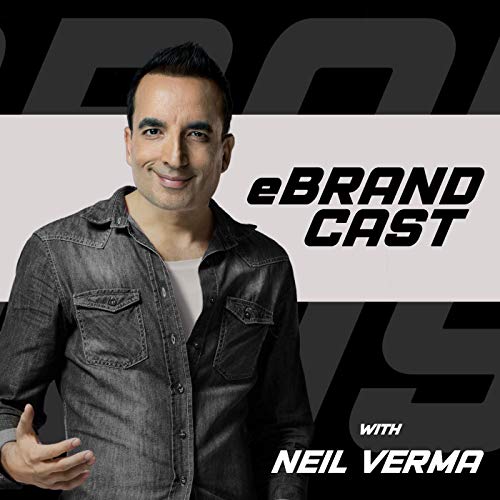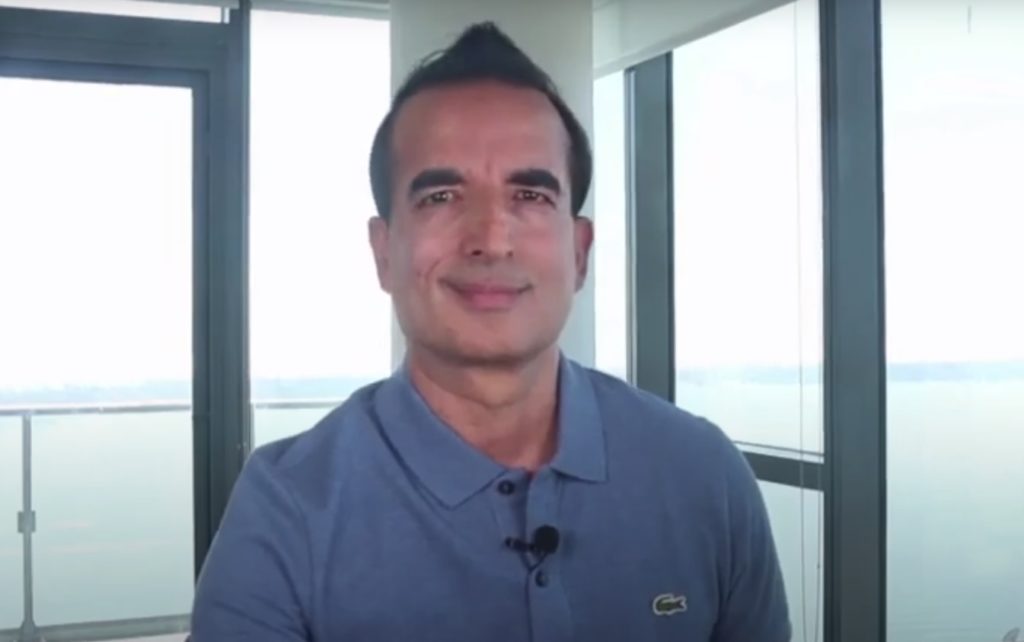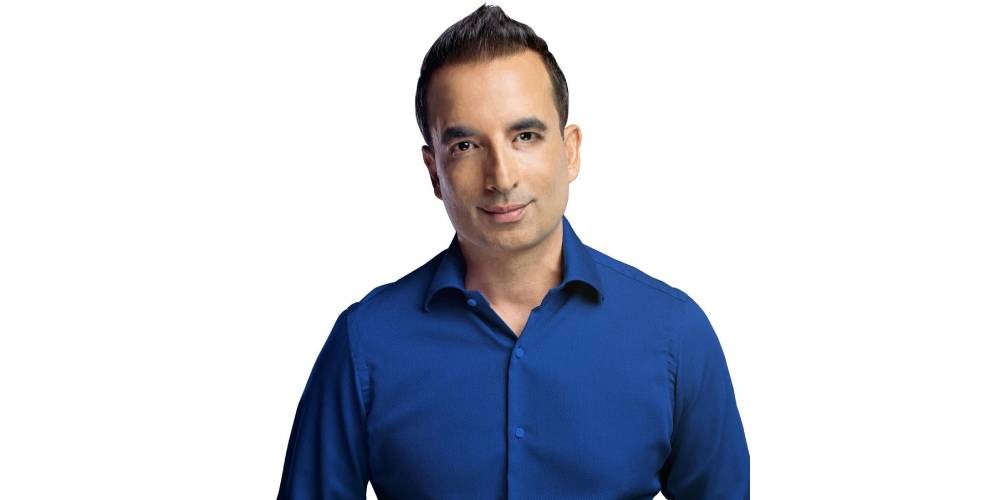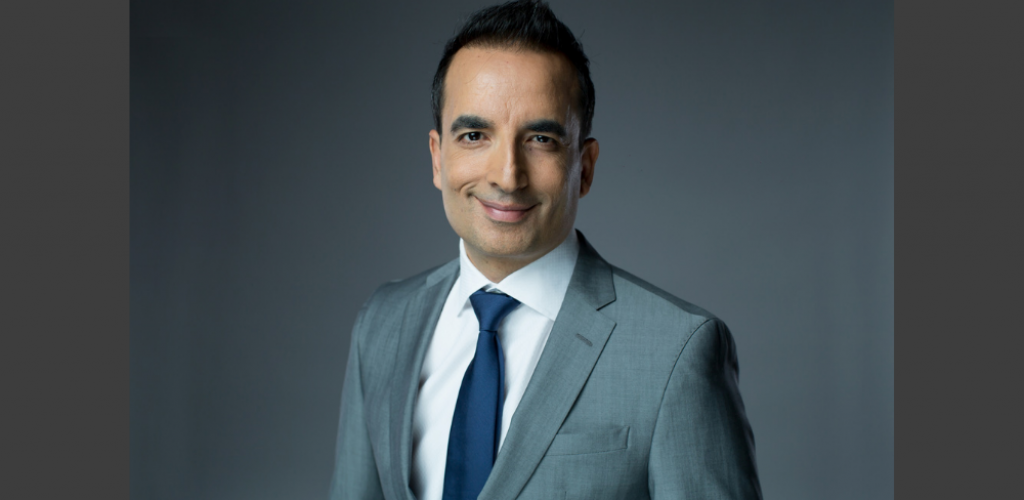Raj Girn: Hey, guys, thanks for tuning in to another exciting episode of The Transform Your Confidence Show. This week we talk about how to build a successful eCommerce business from start-up to exit. The theme in this week’s The Transform Your Confidence Show, is Branding & Marketing and the series is entitled: “How To Incorporate Effective Brand Strategy In Building A Successful eCommerce Business!” My guest is a branding and eCommerce expert and the founder of eBrandBuilders, Neil Verma.
Here is Part Two of our conversation:

Raj Girn: You have this desire to build something from the ground level up. You said this right off the top, answering my first question and I want to kind of take us back there a little bit. You’ve been successful at doing this, exiting three e-commerce businesses. Can you share some milestones on how you did this? Specifically where branding played its part to create the success that ultimately allowed you to exit, because we know that a lot of other pieces would have been needed to have been at play here. But as it specifically relates to what you felt the branding piece brought to the table to create that success, can you share that with us?
Neil Verma: Sure. And do you want a personal example of mine? Would that work?
Yes, absolutely. That’s the best example.

Certainly. I definitely practice what I preach and it just resonates strongly with me and that’s why I follow my own methodology. And in my situation, it was it was actually the germination of the idea itself. And the irony behind my third product, which went on to be a bona fide success, was it actually germinated from my corporate years of traveling. I was certainly a road warrior spending close to one hundred nights on the road, which was quite common in those times. Now we can only dream of traveling. And and I was constantly using Ortel products that obviously made this completely dry and flaky and itchiness was rapid. There were a lot of products out there, but based on a personal condition that I had, which is vitiligo, which is the general lightening of the skin. I went knee deep into working with formulators and creating products that were natural and using rejuvenating and largely organic ingredients. And the product was closely aligned with something that affected me personally. And it was that scratching of my itch that does become some of the best ideas that you can actually embark upon because you are customer number one.
And you know that this customer number one can certainly be amplified to customer number hundred, thousand, million because it’s a large base of pretty much other customers like yourself that are probably in the same boat as you are now. So that was the germination piece of it, which is, again, a core of a branding which was tied back to my purpose. And once those values of the day to day principles that guide the decisions, I then moved on to the other aspects of branding. And that was the piece of it. I’m jumping here so that I can cover a lot of the highlights here. And then it was making sure that once the core was done, the customers on the community was done, that’s when I started looking at creatives, the naming, the logo, the color and everything was rooted in actually the meeting itself of what the brand stood for. The logo itself reflect the simplicity. The colours, that was a function of does it mostly resonate with the market that I’m going for?
“You truly need to understand how you plan to differentiate, you can focus on authenticity, transparency, convenience, simplicity.” ~Neil Varma
Since it was a beauty product, we chose white and black as the predominant colours. And lastly was once we jumped from the creatives, obviously I had a story to tell, my own story to tell with the content piece of it. The last aspect was channel and and we only knew from our knowing our customer base, which was largely meant that they are not comfortable with pushing sharing content the way women are on other socials of Instagram and Pinterest. So email marketing was our huge focus for that. So you can see here that because this was a germination of my idea and it was something that I was totally passionate about, I had the brand purpose that was instilled in me that the values arose out of that purpose. And then from there we moved on to the customer piece of it, looked after a larger community of like minded people that this product would resonate with our uniqueness, obviously with the fact that it was for people that were suffering from other skin conditions. So we could speak to that audience and build our uniqueness that way. And of course, our creators who reflected in that mode and the storytelling obviously I was the face of the brand. And that and that extended to what are the channels that are focused on an email marketing became one of it. So you can see it fits any space that a customer is looking to develop a brand. And you might want to skip something, but you might just tumble if that’s the case. So it’s a logical process of branding and it does touch every facet of the brand building process,
Can I ask what this brand was called? I’m so curious now that you’ve successfully bought me into the story. I’m excited to know now what the brand was called.
So unfortunate, it was an acquired situation. So I was acquired. That’s the reason why I’m no longer the face of the company, but I still consult with the brand and I’m unfortunately in the place that I can’t disclose.

I completely understand. What a great story. I mean, you got acquired before you actually even got out there and became known for it, which is incredible. Folks, if you’re just tuning in, I’m speaking with the fabulous Neil Varma. He is an ecommerce branding guru. He’s built out three of his own online ecommerce brands. And he’s talking a little bit about some of the things that you need to know when you’re coming into this space, especially if you’ve been brick and mortar and now you’re looking at the opportunity online. And it’s such a huge opportunity. And making sure that you can navigate it right with the branding piece is really what we’re talking about today. Neil, I wanted to ask you this: Can you give us an example of an online store that is a great example of how branding has been done right, that people should maybe study when they going into this space?
Yeah, certainly. Obviously I come across a lot of brands and, it’s funny actually, when directors look at movies they look at it through a different lens. And that’s the same thing with a branders and marketers when we look at an ad or look at a campaign, we definitely dissect it much more than the average person, which I’m not sure is a good idea or a bad idea because you can’t really enjoy a good campaign. But one brand that really comes to our mind is Patagonia and you might be aware of them. They’re a designer of outdoor clothing that gear for solid climbing, surfing, skiing, snowboarding, fly-fishing — none of the things that I’m interested in but hopefully someday I can venture out there. But I’m really impressed with the brand. And again, it just the tale begins with the founder, Yvon Chouinard, who is a Québecois, and the whole company, Patagonia, they wear their admiration for their founder, Chouinard, on their sleeve and they feature his origin story prominently on their website under the Inside Patagonia section. And that’s the mark. That’s where the branding starts from the origins of the purpose. Those are the values that are instilled. But I just want to highlight some key moments with this company.
I believe this was in the late ‘ 60s and Yvon himself was in love with rock climbing at a very young age. And he taught himself to blacksmith so that he can manufacture his own iron pitons. Those are the devices that you need to climb rocks and long before that, his friends started clamoring for these pitons. And so he started selling them for roughly $1.50. And over the next few years, he sold pitons out of the back of his truck and all these climbers from all over North America, knew the fact that this Chouinard was actually selling these pitons. And by 1970, Chouinard equipment became the largest supplier of climbing hardware in the US. But they also realized they became an environmental villain because their products, which had to be hammered into place, were actually damaging the rock. So after seeing the damage firsthand on these rocks, they decided to completely phase out of the piton business. So I want pause here for a second and reiterate two things. First, this is in 1972 that Ivon decided to completely stop manufacturing the pitons as there was an environmental hazard, even though at this point in time it was a bulk of their business. So you can see how remarkable that was.
No one was talking about environment.
Exactly. Exactly. And even now, they want to push it underneath the rug here, like they think it’s just a waste. So this was in 1970, and then they decided to release an eco-friendly alternative and they did it through a catalogue with an essay. So this is content marketing, when no one had actually heard of the term content marketing. So you can see where this brand has come from today. Today they’re close to 1,000 employees. Thirty, 35 stores, revenues close to a billion dollars. So a couple of things I want to reiterate here. Branding is certainly not relegated to the big brands. Here Patagonia was born out of a $1.50 product and since then it was retired because there was an environmental hazard. And secondly, all big brands were at the onset and they’re branded strictly has been based on their values, of their ethos and certainly knowing what their customers aspire them to be. And that’s what people, that’s what ecomm entrepreneurs, that’s what business owners, need to think about when they’re starting a business or when they’re starting a service business, for that matter, it does need to go down to your core. And branding is important regardless of what stage of your business you are in. It’s easier when you’re on the onset because you can line everything up, as we said. But and it’s not restricted to the Nike, the Apple and the Starbucks of the world. Every service, every product out there can be the brand. And you should build a brand because that’s the differentiator that you can have.
“You should build a brand because that’s the differentiator that you can have.” ~Neil Varma
And this is what successful branding is all about, Neil, right? I want to now flip the coin and I want to ask you this: What would you say are the top three reasons ecommerce stores fail?
Right. Right. I think alluded to it. And I see that in ecommerce right now a lot. Especially the fact that it’s maturing right now and it’s not having a differentiated product. I’m sure there are a lot of folks out there that are thinking of jumping into ecommerce and there is not a product category that isn’t approaching saturation. Last year, for example, Amazon added a close to a million new sellers. And for that, you truly need to understand how you plan to differentiate. And it does not need to be a totally evolution. There are certain tangibles that can build into your product. You can focus on authenticity, transparency, convenience, simplicity. But there has to be something unique about it. The second component is, again, I’ve talked about before as well, is not having an organic strategy. Facebook ads were cheap a long time ago. Google Ads were cheap a long, long time ago. So that overreliance on paid efforts definitely made brands work. But we’re way past that stage right now, especially in the last week or so. It’s going to get even more expensive than it was before.
And is this the whole Apple thing? Is this because . . . ?
That’s the whole Apple thing. The new app that Apple introduced. So Apple is asking users if they want to be tracked online or not. And I believe that 96 per cent of users have said that they do want to do not want to be tracked. Ninety-six per cent is a big hit to Facebook. And obviously they had press releases which condoned what Apple was doing, but it didn’t go too far. Obviously, I wanted to make privacy an important topic and rightly so. So that has come to the forefront. Lastly it’s the wrong audience. I would say it’s just too much if you’re focusing on a broad audience, it’s just not going to go anywhere. And that’s where the customer and the component piece of the seven Cs is so important, right?
Absolutely. It comes right back to that. For anyone that’s just joining us. Can you just let them know how they can tap into your program? Where do they need to be able to go to be able to find out more?
Sure. This is at ebrandcall.com. And if they really want to check out the material before they want to talk to us and they want to read more about the seven Cs, I do have a book they can check out and they can definitely grab a copy of that and get familiar with the material or if they’re ready to jump in a book called with the team at ebandcall.com. And they can certainly talk to one of us and we can share more insights into our program and support for them if it’s something that they’re looking for or not. And we can go over the details with that.
Absolutely. And that’s seven weeks, guys. Seven Cs, one a week. Anyone can do it. So if this is something that you want to tap into, you want to reimagine your current existing brand, you want to pivot from brick and mortar to online or you just want to kind of do a health check to see how you’re placed in the strength of utilizing the power of branding for your overall business, health. You know, all of these are great reasons. Let me ask you this before we move on, Neil. You mentioned your book, Checkout. I wanted to just ask you a little bit about that. Can you tell people what the book’s about and if it’s available everywhere?

Yeah. And so it’s available on book.com and it’s certainly available on Amazon as well. And again, this was . . . The way the book came about, was after those two failed experiments that I had with my businesses when I went back to the drawing board, so to speak, and and I set on a mission to figure out what I was doing wrong. And that’s when, as we talked about, I went and analyzed the top 200 direct to consumer brands. I had the academic experience, the professional experience of branding. But there was something that was missing there which was specific and obviously branding all over the years, especially ecommerce space that I wanted to delve into. So Checkout is a germination of that. My business was the germination of that and Checkout is a germination of that. And we go through each one of the Cs in the book as well, except for in the coaching program, we go into much, much greater detail. You have a coaching aspect of it as well. But yeah, it’s an analysis of the top 200 brands that is presented through the seven Cs that we discussed.
Brilliant. So you heard it right here, folks. You can go the book route and understand about the seven Cs of branding. Or you can actually just go all the way, deep dive, work with coaches and really understand what these seven Cs are and how to kind of build them out to ensure that you get success with your brand strategy, because that’s kind of the point at the end of the day. And I wanted to ask you this, Neil. Is there a different approach for creating brand strategy for ecommerce businesses? I kind of feel like you answered this, but I just kind of want to ask you very succinctly. Is there a different approach creating brand strategy for ecommerce businesses over brick and mortar businesses? Because not all businesses need to be online because they have a specific service type of product type of geography that they service. It may be very local, maybe a lot smaller. There could be other variables associated with that. So let me just ask you that question first. That’s the first part of the question. And the second part is if somebody wants to pivot online from brick and mortar, because really it’s almost like you can’t not do that today. So it’s kind of a two part question.
“You need to understand, obviously start from the core of why you’re starting your own business.” -Neil Verma
Yeah. I’ll start with the latter part first. And there’s never been a better time to either pivot or to actually have that omni channel presence. And obviously, when I say omni channel, it’s brick and mortar diving into online. So you actually have both an online and offline presence. Right. And obviously the last two years, I would say it’s been almost a year and a half now, the segment of customers that were on the sidelines of ecommerce they’ve all jumped in. And it’s quite interesting that product categories that were not the typical ecommerce products, they’ve seen a massive convergence. And you see in medical products, cleaning products, grocery products and companies that were that had a smaller percentage of B2C sales direct to consumer sales in some cases that reached the projections three years earlier. So, again, if they are on the sidelines, brick and mortar, there’s never been a better time. From my approach, here are my recommendations if you are thinking about jumping in. Don’t consider it as a separate channel. And this is going back to when we talked about that the customer is a channel. So you’re not creating a separate channel here. Don’t view it as a separate channel, because when you start doing that, you have your departmentalize, like you put out there, it’s just held in isolation. You need to create it as part of the customer journey as this is a holistic effort or otherwise the entire customer experience will be lost.
And you see that when you’re shopping online. Let’s say you go to a Nordstrom and they say, oh, it’s only at the store level or it’s not at the website level, and you kind of wonder, is it the same company. So that’s what we’re alluding to, you need to concentrate on the customer that once you consider them the customer, the offline and online become a hybrid approach. That and one one of the other caveats here is that for offline companies, brick and mortar, they probably have some kind of hesitation that they do not know the customer. But you can still conduct a deep analysis of your customer base through different data points, surveys., calling your customer. So you need to be aware of that as well. So, again, never been a better time, but when you do approach it approach in the sense that it’s just another aspect of the customer journey and that you can still leverage, at the end of the day, you’re still selling to human beings, you’re still selling people and they’re buying up people. So nothing really changes. It’s just a medium that changes. And that could be easily, I guess, morphed into what your strengths are. So you can rely on those who of thinking, oh, we don’t have a website or you are too much of a hassle or a big stumbling block for us. And that should never be the case.
So much to think about. And it kind of warrants a larger discussion. I know that. I got to bring you back on, Neil. You have come to the end of our discussion and it feels like the time just whizzed by because I feel like there’s more that we can talk about, but to encapsulate our entire discussion and to just kind of bring it full circle. What do you feel people need to know about incorporating effective brand strategy in building a successful ecommerce business? What do they need to know?
Right. And it’s just like I said before, the product categories are saturated. We’ve talked about that. They do need to understand that there is an emotional component of why people buy from you. And you might think that this is a logical call. This might be a logical decision on their part, that it’s about features and benefits. It’s not about that. It’s actually about who you want your customers to be. And it’s that aspirational level. It’s that elevated a level that you need to understand customers buy. Once you do that, you truly can resonate with customers. You truly can understand where they’re coming from. And it’s that delicate state and that customers achieve that makes it really easy for consumers to understand brands and for brands to understand customers. So we’ve talked about you look at a Nike, look at an Apple iPhone, look at a Starbucks. Why do we spend $1500 every two, three years on an iPhone or why do we lace up in $200 Nikes or why we buy a $5 latte every day when we’re going to work. It’s beyond that, right? You’re not buying the product. You’re buying the elevated status there. And I gave that before in the Patagonia example. You’re not buying the product. You’re buying more of that from that brand. And once you’ve get that, once you get that aspirational aspect of your product, that’s when things become easier both in ecommerce branding for sure, but more so in any product service business out there.
“You’re not buying the product. You’re buying the elevated status there.” ~Neil Verma
Absolutely, Neal. I mean, it all comes back to creating that connection and cultivating that connection and elevating that relationship and doing it long term. The consistency factor, I don’t really know how people do it without having a brand strategy. To be very honest, I don’t even feel that it’s possible without having that brand strategy, because you and your internal ecosystem, the people that work the machine, need to understand what you’re working in. What is that brand that you’re working in in order to be able to service that messaging and create that connection with the customer pool out there. And it needs to be very clear to the customer pool, who are you? What is the value proposition? And what am I getting that I don’t already have. And why is it that I am getting it from you versus someone else as a similar product all comes down to really dialing in that brand strategy so far. Any final words that you have, Neil? Maybe, perhaps anything that you feel that I haven’t touched upon, that you’d like people to know or any kind of final words of wisdom or inspiration that you have from your side that you want to leave everyone with.
Yeah, I think we’ve talked a fair bit on the branding component and all I want to say is for those budding entrepreneurs out there, and this is either online or offline product or service, you need to understand obviously start from the core of why you’re starting your own business. It makes the job much more easier. And the second piece that I want to talk about is the niche component of it. We think that going after a smaller niche, going after a segmented group of customers, is actually detrimental to our scaling of the product or scaling up the business. It’s actually not. You do yourself a big service by making sure that you’re speaking to an audience that resonates with your product. So think about it from that perspective that you need to target a core group of customers that are going to resonate with you, with your messaging, with your product differentiation. And once you’re there, there are six billion, seven billion people out there. It’s easier to scale once you have that core offering that a customer base can relate to. And there’s a big essay out there called One Thousand True Fans that no one has ever read. I think it’s by Kelly. The first name escapes me, but it’s a great read on how you need to focus on initial process of how to build a business. It doesn’t take long to focus on a niche, and it starts right with you and then your first one thousand customers. And once you’re bank on back, it’s very easy to get the scale and the transition you need to make a big brand.

That’s a perfect ending to such a powerful and important and relevant show that we’ve done today. Neil, I want to thank you for joining me today and giving all of our audience just nuggets of experiential experience. I also want to give people the opportunity to connect with you. You know, what socials are you on? Again give us your website. Let’s let people know how they can, you know, tap into your ecosystem.
Sure. The best way to get a hold of me is I am on the socials. The letter “I” Neal Verma on LinkedIn, Twitter and Instagram. And if you’re looking to build a business, looking to build an ecommerce brand. You can set up a call with my team at your ebrandcall.com. And I wanted to thank you for having me. It’s an absolute honor and certainly a pleasure to reconnect after so many years.
“You need to target a core group of customers that are going to resonate with you, with your messaging, with your product differentiation.” ~Neil Verma
Absolutely. My gosh, I’m just so happy that I was able to get a moment of your time because I know how busy you are. And I love hearing about your parallel journey and just giving these tips of insightful and inspirational, motivational information to everyone out there. I really hope that everybody listens back to this and sits with a lot of the information here, because if you are able to kind of really hone in and dial in on all of these things that we’ve spoken to today, what Neil has really shared today, I really do believe that you will be on the fast track to success. So really do that, folks. And I look forward to seeing everyone next time, Neil. It was an absolute pleasure. I am so going to bug you again because we are going to talk about this deeper and just really kind of silo in on some of this. Thank you so much for joining me.
Absolutely an honour, Raj. Thank you so much.
Thank you. Bye bye now.
Bye.












